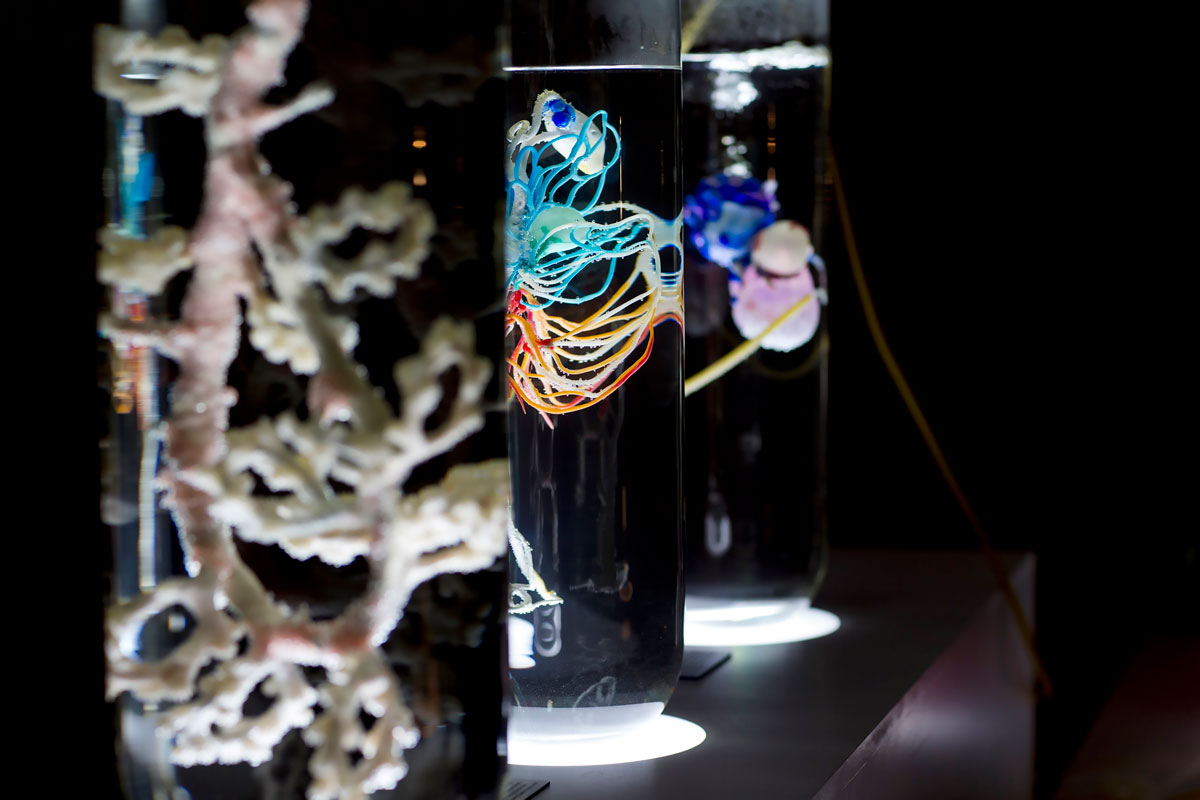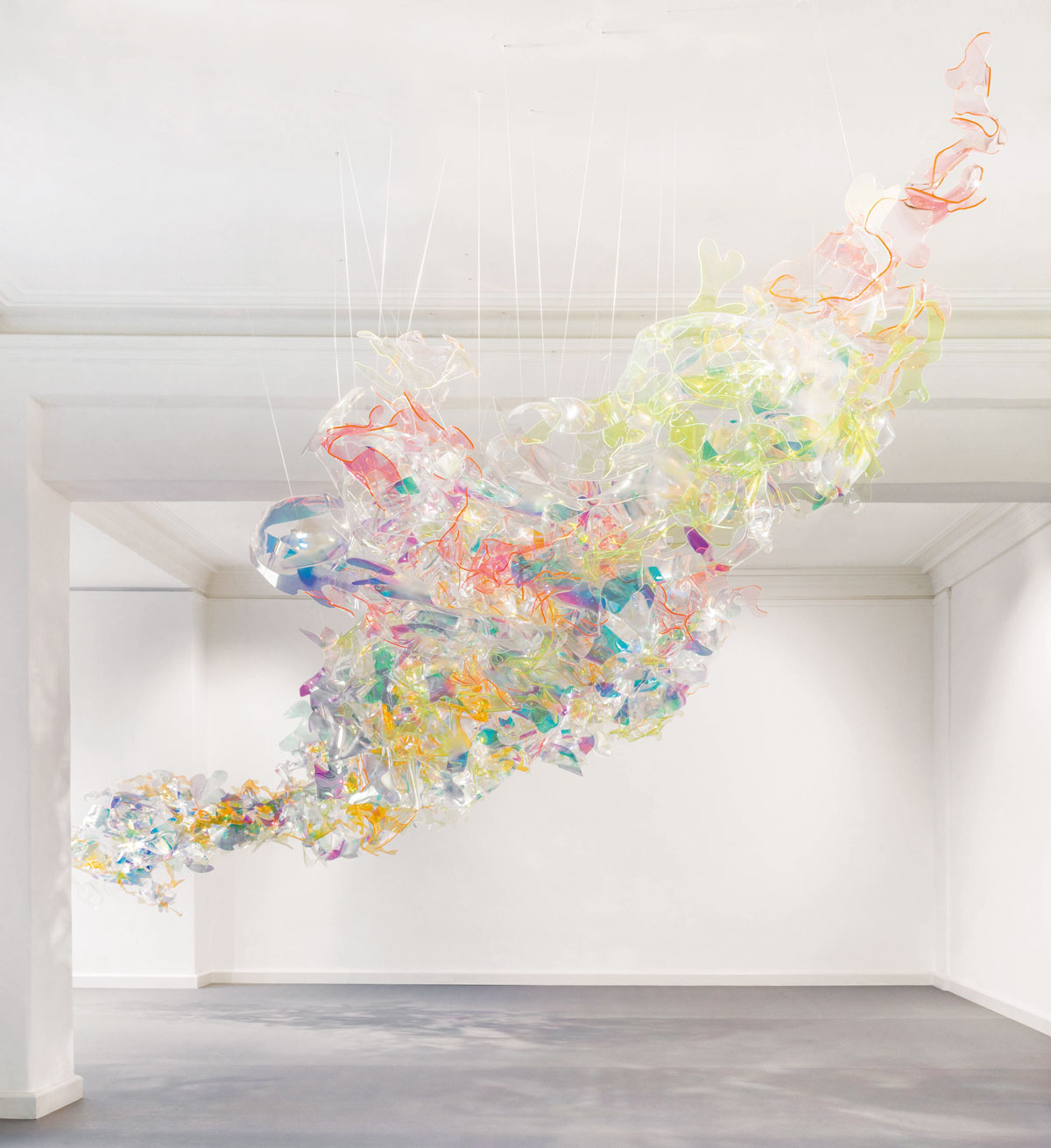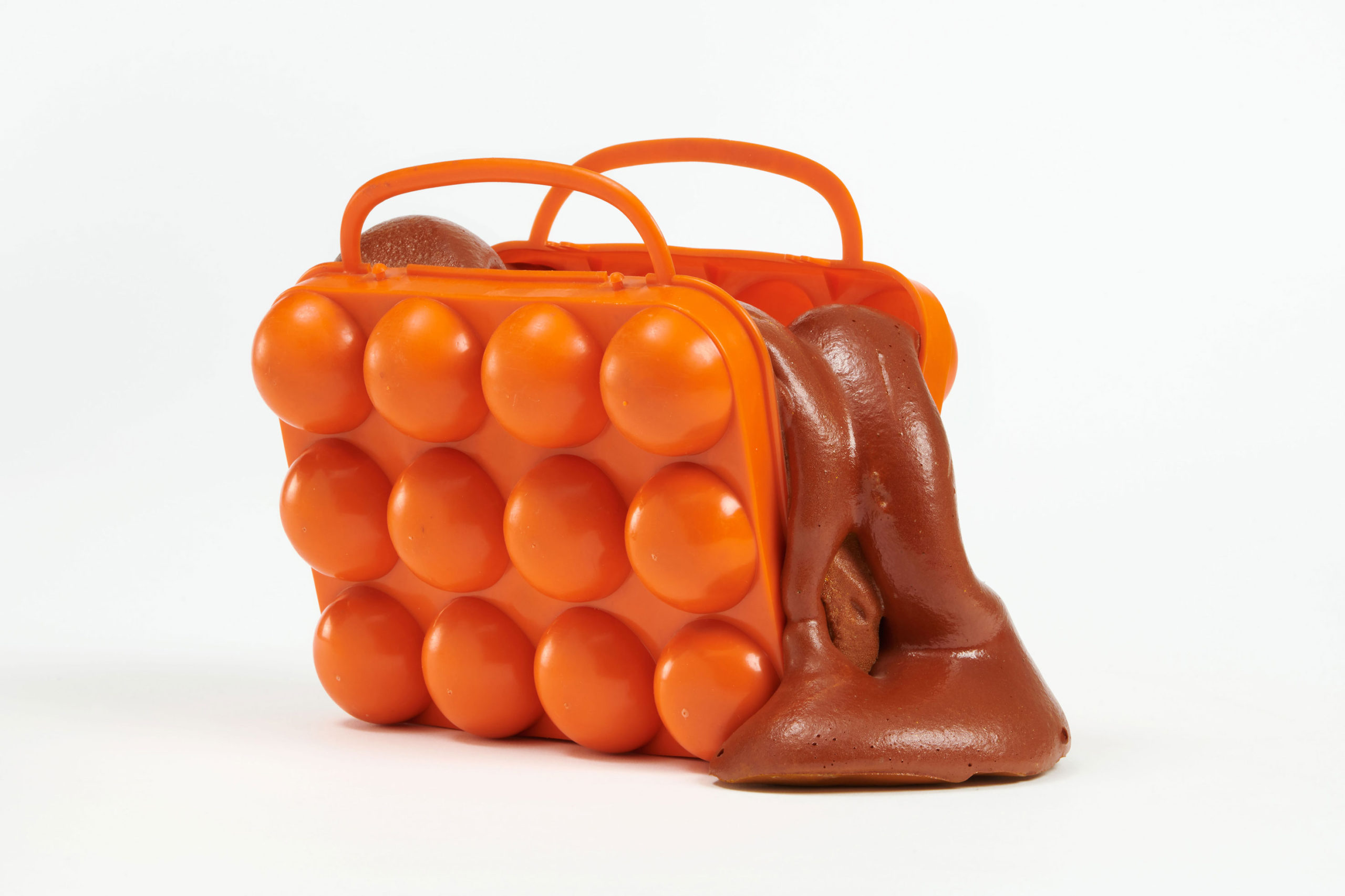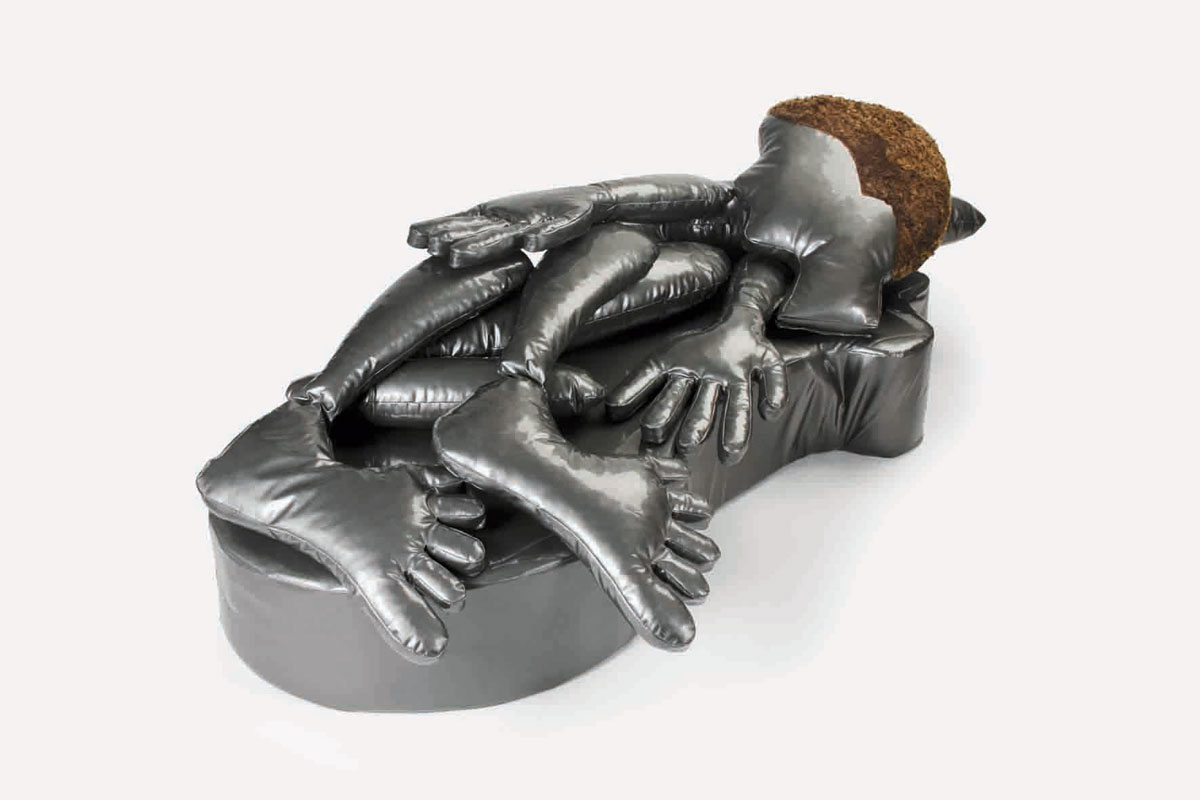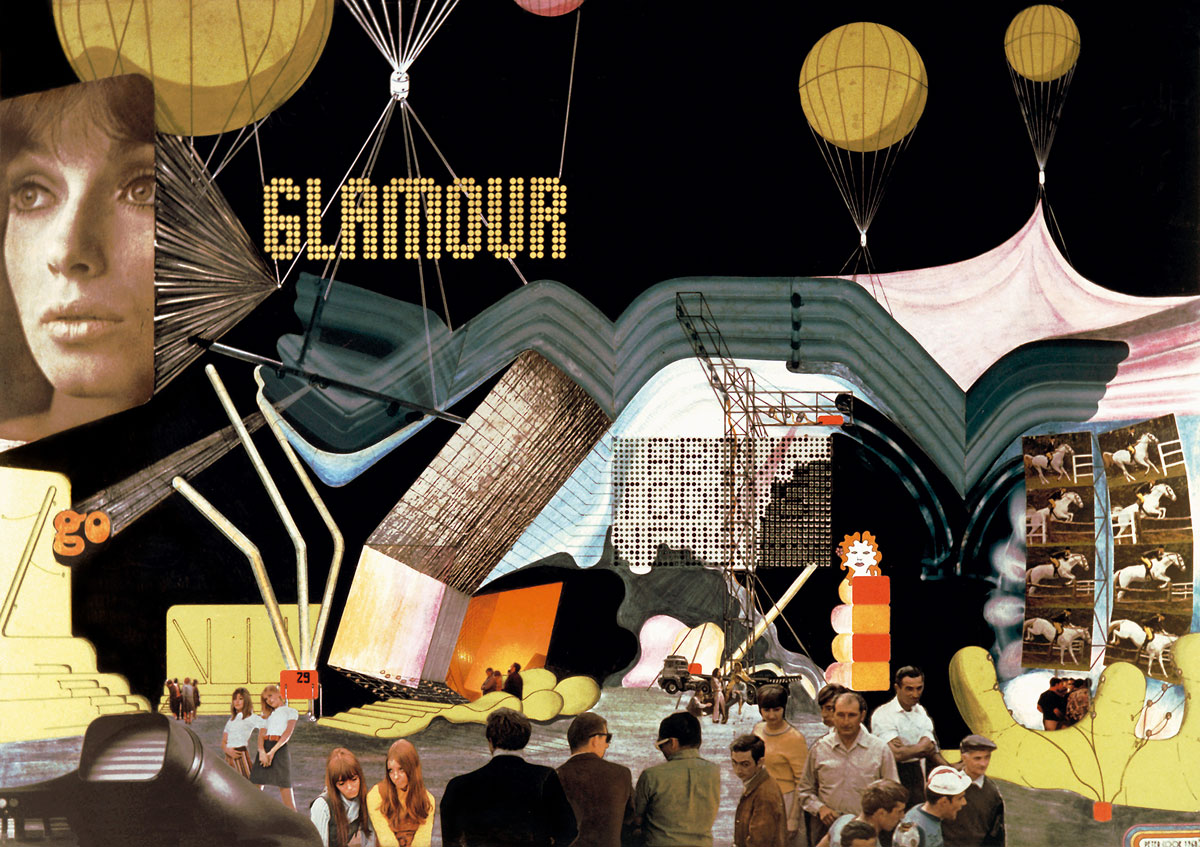PRESENTATION: Plastic World, Part II
 Plastic is everywhere. It permeates the present, is cheap, is available nearly all over the world, and is omnipresent in everyday life. Whether hard or flexible, transparent, opaque, patterned, smooth, delicate, or colorful, today it can be used to produce nearly anything. Synthetic substances had their major breakthrough in the 1950s and became both a symptom and symbol of mass culture—the “plastic age” was born (Part I).
Plastic is everywhere. It permeates the present, is cheap, is available nearly all over the world, and is omnipresent in everyday life. Whether hard or flexible, transparent, opaque, patterned, smooth, delicate, or colorful, today it can be used to produce nearly anything. Synthetic substances had their major breakthrough in the 1950s and became both a symptom and symbol of mass culture—the “plastic age” was born (Part I).
By Dimitris Lempesis
Photo: Schirn Kunsthalle Frankfurt Archive
Plastics also found their way into art early on due to their enormous design possibilities, quickly becoming a central material and a vehicle of innovation. In the search for the new, experiments were done with the materials most recently made available, whether Plexiglas, Styrofoam, silicon, vinyl, or polyurethane as well as industrial manufacturing techniques. In the consumption frenzy of the time, Pop Art celebrated the new artificial and inexpensive material with its colorful brilliance and bright hues. Plastic was used in fantastical-seeming spaces and environments; it was inflated, foamed, and poured at happenings. The fascination with space exploration, the moon landing, and high-tech materials inspired both visual art and architecture to create airy constructions and progressive spatial concepts. At the same time, besides the minimalist works of the Finish Fetish artists at the end of the 1960s, there were also accumulations of trash, which examined the excesses of mass consumption and the ecological dimension of plastic. In light of the enormous spread of plastics and the polluting of the environment, such perspectives are increasingly being taken up in artistic works. The exhibition “Plastic World” brings together around 100 works by over fifty artists and makes clear how plastic as a successful, multifaceted material has gone in its brief history from being an embodiment of progress, modernity, a utopian spirit, and a democratization of consumption to being a threat to the environment. In the 1960s, plastic became the iconic material of Pop Art and was equally popular in both art and design. Fascinated by the culture of consumption and the things of everyday life, Claes Oldenburg, for instance, constructed sinks, ice bags, and light switches from vinyl. With his refined recoding of the ESSO logo into LSD in 1967, Öyvind Fahlströms satirized the logos of advertising in a playful and provocative way—and reflected not least the ubiquity of petrochemistry. For his large-scale motifs such as “Forest Ranger” (1967), James Rosenquist, who began as a painter of advertising posters, made use of BoPET, a tear-resistant polyester film, which, when positioned floating in space, also expands painting. Omnipresent, too, in the male-dominated artworld of this time was the view of the female body, which was countered by women artists such as Nicola L. or Kiki Kogelnik. For her cutouts such as Man with Ingredients (1970), Kogelnik cut out the contours of her male artist colleagues, who lay on the floor and served as models.
With the rapid spread of industrial materials, artists around the Italian Arte Povera, such as Gino Marotta, explored the relationship between nature and artificiality and subverted traditional concepts of a mimetic representation of nature in the second half of the 1960s. Marotta assembled his artificial paradise “Eden Artificiale” (1967–73), a modular and sterile non-nature, from acrylic glass with a playful lightness. The aesthetic strategy of the Arte Povera artist and environmental activist Piero Gilardi, who depicted details of nature with his “Tappeti” is the exact opposite. These works are made from polyurethane foam, seem deceptively real, and can barely be revealed as artificial by the naked eye. With perfect mimicry, Gilardi’s artificial beach “Spiaggia” (1979) or the synthetic “jungle Palmeto” (1987) make reference not least to environmental issues. The German artist Otto Piene also brought together technology and nature. In a walk-through environment of roughly 160 square meters, the Schirn is presenting a new edition of his “Anemones: An Air Aquarium” (1976/2023). Huge inflatable and transparent sea anemones, up to eight meters in height, as well as other sea creatures make it possible to experience underwater worlds. The poetic and playful dimension of the work’s creation at the time is overlaid today by the knowledge of the pollution of the oceans by (micro-)plastics.
Space exploration, aerospace technology, and not least the moon landing itself left behind a deep impression in pop culture, design, and the utopian spirit of the 1960s. The artistic work and experimental architectures of the space age are defined by weightlessness, mobility, flexibility, and, not least, working in a collective. Visionary models such as Archigram’s climate capsule “Air Hab” (1966) deal with the idea rather than its execution. The British group published their associative picture montages with a certain closeness to Pop Art such as Instant “City, Glamour“ (1969) starting in 1961 in the magazine Archigram. In Austria Coop Himmelb(l)au and Hans Hollein opened up new approaches to perception and communication with temporary architectures. Hollein’s inflatable “Mobiles Büro” (1969), a moveable external plastic shell, promises a new physical experience in urban space. The US-American Richard Buckminster Fuller, who examined a systematic interaction of technology and social aspects by using new materials, was also pathbreaking with his series of innovative designs and is famous for his geodesic domes. The multifaceted possibilities of form and design of the continuously growing family of plastics inspired a huge pleasure in experimentation in artists starting in the 1960s. The French sculptor César, for example, realized happenings with polyurethane foam, which he allowed to flow across the floor by the barrelful, developing a life of its own. Besides the Expansions cast in free forms, he also experimented, for instance, with methacrylate, which he folded to produce a “Compression” (1970). Lynda Benglis worked with latex and polyurethane foam and used the concept of performative pouring in her “Frozen Gestures” group of works, in order to create artworks such as “Untitled” (1969) based on her body’s interaction with the material. With her readiness to strike out on entirely new paths, Eva Hesse gave her works such as “Sans II” (1968) a fragile and ephemeral character by means of innovative working methods and materials such as glass fiber and polyester resin. Today, the palette of materials has multiplied. For their creative material research, the Frankfurt-based artist collective HazMatLab (Sandra Havlicek, Tina Kohlmann, and Katharina Schücke) makes use of unusual substances including synthetic slime, industrial nail polish, and the 3D printing process, as in their sculpture “Coral Cluster” (2021–22).
The striking artificiality, smooth surfaces, and luminous or delicate colorfulness of plastic also inspired so-called Finish Fetish artists like Craig Kauffman in California in the late 1960s. His minimalist objects of translucent and transparent materials evince a nearly sensual quality as a result of their perfect, shiny, and almost wetly-shimmering surfaces. Flawless surfaces also distinguish the sculptures of Berta Fischer, which, like “Nironimox” (2023), float in space with transparency and lightness. Finally, in his Technological Reliquaries, the American object artist Paul Thek fascinatingly contrasts the organic texture of an encased piece of rotting meat made of wax with the smoothness of the shrill neon-colored plastic container in which it is enclosed with a seemingly everlasting artificiality. In the 1960s, artists of Nouveau Réalisme such as Arman were already less interested in the smooth, beautiful material than in what ultimately remains. In his “Poubelles” of acrylic glass, he accumulated a hodge-podge of the waste of his time. With “Accumulation rasoirs (pour Ben)” (1960), the artist exhibited a box filled with old electric razors, thus making a critical reference to pop culture’s enthusiasm for plastic. Christo also changed the perspective and as in the early work “Look” (ca. 1965) wrapped the mechanisms of consumer society by inverting the weighting of content and packaging and making the latter the main protagonist in his art. Plastic waste is also central to more recent works, as in Francis Alÿs’s film “Barrenderos” (2004), which shows street sweepers in Mexico City engaged in their nightly removal of mountains of plastic garbage. The large-format material collages by the Ethiopian artist Elias Sime reveal, on closer inspection, that they are assembled from the detritus of civilization such as electronic scrap, computer circuit boards, or plastic-coated cables, put together to create a special cartography of our present. The long-term change in the mentality of society that has taken place with the continuing spread of plastic and its threat to the environment is also reflected in the eco-critical works of a younger generation of artists. In her oeuvre, Monira Al Qadiri addresses the dominance of the oil industry, with which she has been familiar since her childhood in Kuwait. She takes various forms of oil drill heads as the model for her sculptures such as “Orbital 1” (2022), which with their mother-of-pearl like surfaces seem like majestic crowns and trophies of the Anthropocene. In his most recent work, “Fungi Decomposition” (2023), the Danish artist Tue Greenfort takes a look at a mushroom with the name Pestalotiopsis microspora, which was discovered in the Amazon rainforest and is able to metabolize plastic and transform it into organic material. Outdoor, the Schirn is presenting a monumental installation by Pascale Marthine Tayou. In his works, the artist from Cameroon, who now lives in Belgium, makes use of plastic buckets, among other things, which form the crown of a disconcertingly beautiful artificial tree as in “L’arbre à palabres” (2012–23). Tayou’s works make striking reference to the customary large-scale use of the cheap material (not only) in Africa, and simultaneously offer a commentary on the state of our ecosystems.
Works by: Raimund Abraham, Monira Al Qadiri, Francis Alÿs, John de Andrea, Ant Farm, Archigram, Arman, Richard Artschwager, Evelyne Axell, Joachim Bandau, Thomas Bayrle, Lynda Benglis, Lourdes Castro, César, Christo, Constant, Coop Himmelb(l)au, Wolfgang Döring, Öyvind Fahlström, Berta Fischer, Richard Buckminster Fuller, Piero Gilardi, Tue Greenfort, Hans Haacke, Richard Hamilton, Haus-Rucker-Co, HazMatLab, Eva Hesse, Gerhard Hoehme, Hans Hollein, Alain Jacquet, Craig Kauffman, Mike Kelley, Kiki Kogelnik, Nicola L., Konrad Lueg, Gino Marotta, Claes Oldenburg, Walter Pichler, Otto Piene, Bernard Rancillac, James Rosenquist, Niki de Saint Phalle, Dennis Siering, Elias Sime, Ferdinand Spindel, Graham Stevens, Alina Szapocznikow, Pascale Marthine Tayou, Paul Thek, Tom Wesselmann and Pınar Yoldaş.
Photo: Otto Piene, Anemones: An Air Aquarium, New production, 2023, Plastic (TPU film), fan and control box, various sizes, © Otto Piene estate/VG Bild-Kunst, Bonn 2023, © Photo: Peter Moore
Info: Schirn Kunsthalle Frankfurt, Römerberg, Frankfurt am Main, Germany, Duration: 22/6-1/10/2023, Days & Hours: Tue & Fri-Sun 10:00-19:00, Wed-Thu 10:00-22:00, www.schirn.de/

